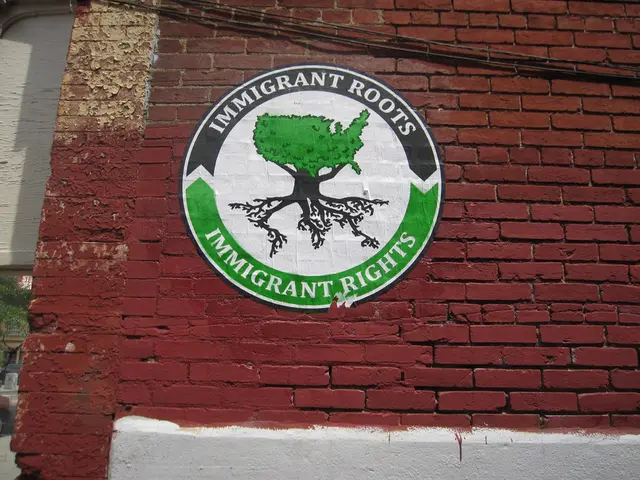China's growing dominance underscores the vulnerability of Trump's trade strategies
In the heart of August 2025, the Shanghai Cooperation Organisation (SCO) held its largest summit ever, with leaders from Russia, India, Pakistan, Iran, Turkey, Central Asian countries, and China in attendance. This gathering, held in Tianjin, China, served as a platform for diplomatic discussions and strategic maneuvering, against the backdrop of evolving global power dynamics.
The summit came at a time when US President Donald Trump's trade policies were under intense scrutiny. On 29 August, a US federal appeals court ruled that most of the tariffs imposed by President Trump were unlawful, adding to the domestic political and legal struggles he faced. The tariffs, particularly those on rival China, had led to a flurry of negotiations, and their uncertain future raised questions about executive power in trade policy.
China's participation in the summit reinforced its role as a central coordinator of diverse partners, including those with ties to the US. The event also highlighted the juxtaposition of China's coordinated international strategy with Trump's domestic struggles and the risk of losing a close ally like India. The Indian Prime Minister, Narendra Modi, who is generally aligned with the US-led Quad, took part in the summit, signifying a hedging of positions in the region.
India's leader's rapport with Trump has pushed him to pursue a different path in addressing long-standing issues with China, especially border disputes. Meanwhile, China's Belt and Road Initiative continues to expand, delivering development projects in Asia and beyond, deepening economic dependence on China.
The SCO summit also saw China announcing grants and $1.4 billion in loans for SCO members to boost infrastructure financing across the region. Chinese President Xi announced a dedicated budget for the SCO and proposed the creation of a development bank and announced development projects across member states.
The military parade that accompanied the summit, featuring Chinese President Xi joined by Russian President Putin and North Korean President Kim, projected an image of competence and forward planning, contrasting with US domestic disputes and legal battles. This contrast was further emphasised on 3 September, when China marked the 80th anniversary of the end of World War II with a large-scale military parade in Beijing, projecting itself as a more confident and capable global power.
However, Trump's unilateral trade approach faces legal uncertainty and growing scepticism from global partners, causing countries to recalibrate their strategies and diversify alignments. The tariffs remain in effect until 14 October pending a Supreme Court review, adding to the ongoing trade tensions.
In conclusion, the Shanghai Cooperation Organisation summit served as a significant event in the global political landscape, highlighting the evolving power dynamics, trade tensions, and strategic maneuverings among key players. The event underscored China's growing influence and its role as a central coordinator, while also showcasing the challenges faced by the US in its trade policies and international relations.
Read also:
- Tobacco industry's suggested changes on a legislative modification are disregarded by health journalists
- Trump's Policies: Tariffs, AI, Surveillance, and Possible Martial Law
- Uncovering Political Ad Transparency: A Guide to Investigating opponent's Political Advertisements in the Digital Realm
- Elon Musk praises JD Vance's debate performance against Tim Walz








